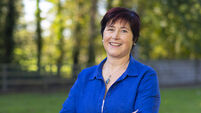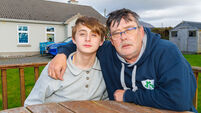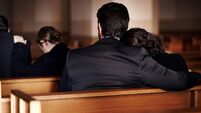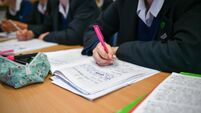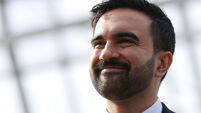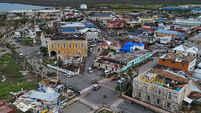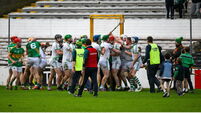Parents are being asked three simple questions about what they want from primary schools

It’s three simple questions that have the potential to make the biggest impact on the future of education in Ireland.
For the first time, parents are asked to have their say on their preferences when it comes to primary school education.
It will be the first time data to this extent will be gathered to create a national picture of what type of school parents want to send their child to, now and in the coming years.
It’s hard to know to what extent Ireland’s changing demographics will impact on the findings.
The parents of both pre-school and current pupils are invited to take part in the survey, which is set to be repeated in 2028.
The five-minute online survey here asks parents their preferences when it comes to the gender mix, the language medium, and whether they’d prefer a religious or non-religious patron, denominational or multi-denominational.
It’s a straightforward question that carries with it big implications.
In Ireland, primary schools operate under a system that gives a lot of power directly to its school patrons.
Patrons have the power to appoint the members of a school’s board of management, meaning it’s the patrons, and not the Department of Education, who decides on a schools’ management.
A patron, and not the State, also sets a school’s ethos, or its “characteristic spirit” as it is described in the Education Act 1998, which determined its “cultural, educational, moral, religious, social, linguistic, and spiritual values and traditions”.
Crucially, this piece of legislation also gives the patrons a legal right to design their programmes in accordance with the ethos of their schools.
While all schools are obliged to teach the curriculum, this legislation allows its ethos to influence how it is taught.
This extends across all subjects on the curriculum. Patron bodies also have the responsibility for religion and how it is taught in individual schools, not the State.
In a multi-denominational school, pupils learn about all faiths and belief systems.
Just under 6% of primary schools are under multi-denominational patrons.
These patrons include Educate Together, Education and Training Boards, which operate the State’s community national schools, and An Foras Pátrúnachta.
Most primary schools are under religious patronage, and the vast majority (88.3%) of these schools are Catholic.
This is mismatched with wider society.
Latest available Census data shows that while the population grew, the number of people identifying as Roman Catholic fell.
In 2022, just under 70% of people said they identified as Roman Catholic, a decrease from 78% in 2016, while those with no religion increased to 14%.
Looking at children in particular, Census 2022 found that 65% of pre-school children were described as Roman Catholic, 16% had no religion, and 3% were Muslim.
People between the ages of 25 to 29 were also less likely to identify as Roman Catholic than other age groups.
This cohort, who you could expect to see potentially becoming parents in the coming years, also had the highest proportion of people who reported having no religion (26%).
Last year, 30% of marriages took place outside of the Catholic faith.
However, as society has changed, successive efforts have tried and failed to increase the diversity of primary schools to offer parents more choice.
In many towns and villages across Ireland, there are no other options for local schools apart from those under Catholic patronage.
Progress to improve the choices on offer has been glacial.
A target of a previous government to achieve 400 multi-denominational primary schools by 2030, through a mix of transferring patronage or the establishment of new schools, was quietly omitted from the new programme for government.
In recent years, 20 schools have successfully transferred their patronage.
Of this, 17 became multi-denominational community national schools, one school transferred to the patronage of Educate Together, one Irish-medium gaelscoil transferred patronage to An Foras Pátrúnachta, and another, under the patronage of An Foras Pátrúnachta, changed to a multi-denominational ethos.
There have also been many attempts through different pilot projects that didn’t result in any transfers, despite strong demand.
A key criticism of previous reconfiguration pilot projects was that the processes tended to be overly complex and vague, and, crucially, asked parents to make a decision on a new school patron, without having any idea who it could be.
With the recently launched parents’ survey, once the Department of Education has the data to suggest strong demand in an area, at that point a facilitator will be appointed.
It would only be the beginning of a process, that will involve further consultation with parents, teachers, the school, and the current patron.
If a school does decide to become multi-denominational, almost everything about day-to-day running would stay the same.
If it switched to a multi-denominational ethos, a school’s board of management would change its personnel, but the structure would remain in place.
If a school decides to become multi-denominational, it will keep its teachers.
It’s also worth noting that all primary schoolteachers, regardless of their own background or what schools they go on to teach in, train together in the same higher education institutions.
Catholic holidays like Christmas or Easter will still continue to be celebrated in a multi-denominational school, and the school holidays will continue to follow the same calendar as they always have.
However, in a multi-denominational school, there is also celebration of the holidays of other faiths, usually mirroring the backgrounds of the student body.
All teachers must follow the same code of teaching practice, which instills values like respect and inclusion.
It’s likely many good teachers working in schools of all patronages are already taking steps to make sure all children in their classroom feel included.
But even with the best intentions, there are structural limits to this. Between first and sixth class, the primary school curriculum dedicates two hours each week to religious education, which in each individual school matches the beliefs of its patron.
In Catholic schools, this takes the form of “faith formation” and focuses on Catholic teachings, while in multi-denominational schools, children learn about all faiths and belief systems during this time.
If a school switches to a multi-denominational patron, Catholic children will still be able to attend the school but preparation for Catholic sacraments such as First Holy Communion and first confession would no longer take place during the school day.
Instead, children would prepare with their parents and their local parishes.



